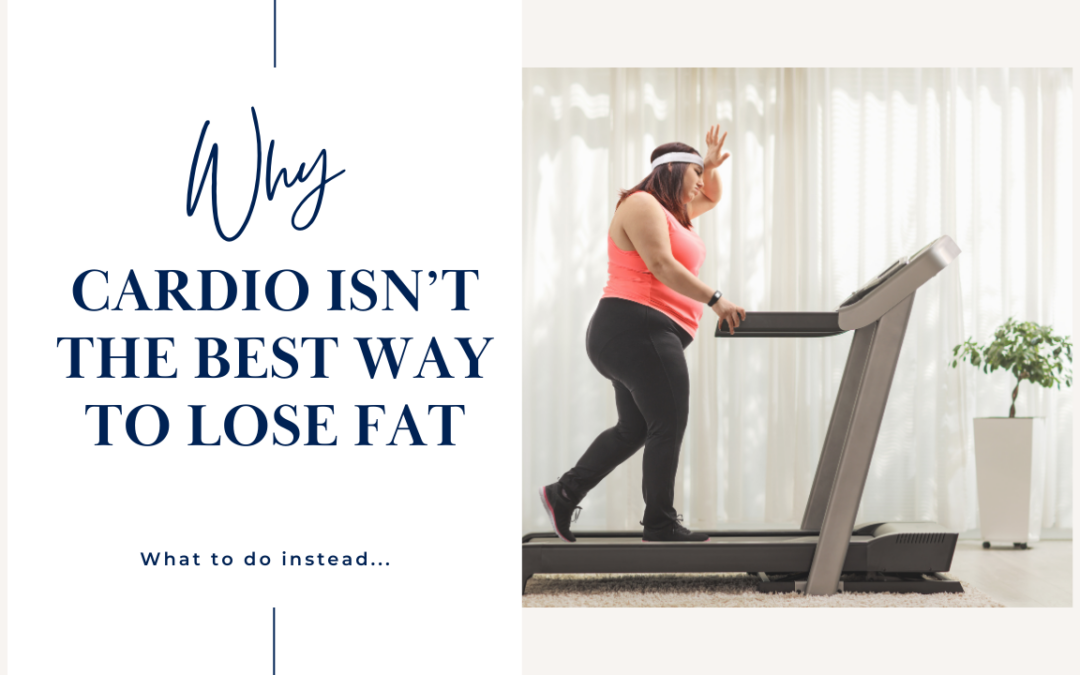
by EM2WL | Feb 25, 2025 | Cardio
For decades, we’ve been told that cardio is the best way to lose weight.
Treadmills, spin classes, HIIT boot camps—if you burn more calories, you’ll lose more fat… right?
Not exactly.
If you’ve been doing more and more cardio to lose weight, but not seeing results, there’s a reason for that. Cardio alone is one of the LEAST effective ways to lose fat—especially for women over 40.
In this post, I’ll break down why cardio won’t get you the lean, toned body you want and what you should be focusing on instead.
Why Cardio Alone Won’t Help You Lose Fat
Cardio can be useful—but only when used correctly. The problem is that most people rely on it as their main fat loss strategy, and that’s where things go wrong.
Here’s why:
Cardio Burns Calories—But That’s It
Cardio burns energy while you’re doing it, but it doesn’t do anything to increase your metabolism long-term.
Why this is a problem:
- As soon as you stop running, cycling, or doing HIIT, your calorie burn stops too.
- You have to keep increasing cardio just to maintain results.
- Too much cardio causes muscle loss, slowing your metabolism over time.
If you’ve ever done tons of cardio and lost weight, but ended up looking “soft” instead of toned, this is why.
What to do instead: Focus on building muscle, which keeps your metabolism higher 24/7.
Too Much Cardio Leads to Muscle Loss
Your body is smart—it adapts to whatever stress you put on it.
If you’re constantly doing long, intense cardio sessions, your body burns both fat AND muscle for fuel.
Less muscle = a slower metabolism = harder to lose fat in the long run.
And here’s the worst part…
Muscle is what gives you shape. If you lose weight but also lose muscle, you won’t look lean and defined—you’ll just look smaller and weaker.
Instead of focusing on burning calories, focus on STRENGTH TRAINING to build muscle and increase fat burn over time.
Cardio Increases Hunger & Can Lead to Overeating
Ever finished a long run or intense cardio session and felt starving afterward? That’s not a coincidence.
Excessive cardio can:
- Spike hunger hormones, making it harder to stay in a calorie deficit.
- Increase cravings for carbs & sugar due to depleted glycogen stores.
- Lead to overeating, undoing the calorie burn from your workout.
Real talk: If your fat loss strategy relies on “burning off” what you eat with cardio, you’re setting yourself up for an endless cycle of frustration.
The better approach? Build a nutrition plan that fuels your workouts and helps you lose fat without starving yourself.
Your Body Adapts to Cardio (Making It Less Effective Over Time)
At first, cardio feels effective because you’re burning extra calories. But after a few weeks, your body adapts and becomes more efficient, meaning:
You burn fewer calories for the same workout.
You have to do MORE cardio just to see the same results.
You plateau—and then what?
If you don’t want to spend more time in the gym just to maintain results, cardio shouldn’t be your main focus.
What works instead? Progressive overload with strength training, which forces your body to keep adapting and improving.
What Works Better for Fat Loss Than Cardio?
So if cardio isn’t the best way to lose fat… what is?
1. Prioritize Strength Training ️
The biggest mistake women make is avoiding weights because they’re afraid of “getting bulky.”
Fact: Strength training builds lean muscle, which:
✔️ Burns more calories at rest (even while you sleep!)
✔️ Prevents muscle loss while dieting
✔️ Gives you a strong, toned shape
Try this:
- Lift heavy (3-5x per week)
- Focus on compound movements (squats, deadlifts, presses)
- Gradually increase weights over time
The more muscle you build, the easier fat loss becomes—without the need for hours of cardio.
2. Focus on Nutrition (Not Just Calories) ️
You’ve heard the saying: “You can’t out-train a bad diet.” It’s true.
Fat loss happens in the kitchen. The key isn’t eating less—it’s eating SMARTER.
What works best?
✔️ High-protein diet (0.8-1g per pound of body weight)
✔️ Balanced macros (not extreme low-carb or keto)
✔️ Enough calories to support muscle, but still lose fat
❌ The goal isn’t just to “cut calories”—it’s to fuel your body properly.
3. Use Cardio Strategically (NOT Excessively)
Cardio isn’t useless—it just needs to be used the right way.
Best cardio for fat loss after 40?
✔️ Walking (8k-10k steps per day) – great for fat loss without muscle loss
✔️ Short HIIT sessions (1-2x per week) – boosts metabolism without overtraining
✔️ Strength training first, cardio second
What NOT to do:
❌ Endless treadmill sessions
❌ Long daily cardio workouts
❌ Thinking “more cardio = faster fat loss”
The Bottom Line: Stop Over-Relying on Cardio!
If you want to lose fat and actually reshape your body, here’s what works:
✔️ Prioritize strength training – Build muscle, boost metabolism, burn fat efficiently.
✔️ Dial in your nutrition – Eat enough protein, balance your macros, avoid extreme dieting.
✔️ Use cardio as a tool—not a crutch – Walk more, but don’t rely on long cardio sessions for fat loss.
When you train smarter—not harder—you get better, longer-lasting results.
Watch the full video where I break this all down:
Have you been relying on cardio to lose weight? How can you incorporate this info into your new plan? Drop a comment below!
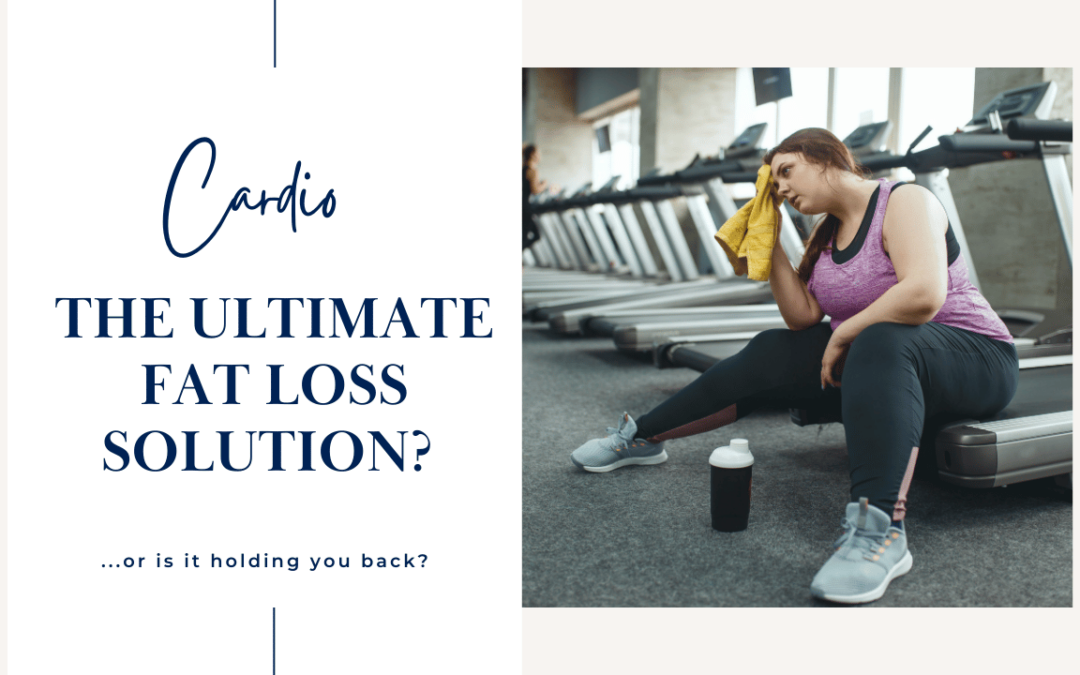
by EM2WL | Sep 25, 2024 | Cardio
Are you 40+ and still relying on cardio to burn fat? Here’s why that might be holding you back.
If you’re a woman over 40 looking to lose weight, chances are you’ve been told that cardio is the ultimate fat-burner. You’ve probably logged countless hours on the treadmill or bike, only to find your results slowing down. It’s time for some tough love: cardio isn’t your fat loss savior.
Yes, cardio burns calories in the moment, but it’s not the long-term solution you’ve been promised. In fact, if you’re focused solely on cardio, you could be sabotaging your fat loss efforts. Let’s break it down.
Cardio Is a Quick Fix, Not a Solution
When we think of fat loss, we often imagine burning as many calories as possible, and cardio seems like the obvious answer. It’s fast-paced, it gets your heart rate up, and you leave the gym sweaty and satisfied. But that satisfaction is often short-lived.
Cardio burns calories while you’re doing it, but once you stop, so does the burn. That’s why you might notice that despite upping your cardio sessions, the scale isn’t moving—or worse, it’s creeping up. The issue? Cardio doesn’t address the bigger picture of fat loss, especially for women over 40.
The “Skinny Fat” Trap
Women over 40 face a unique challenge when it comes to fat loss: muscle loss. Every year, after the age of 30, we naturally lose muscle if we don’t actively work to maintain it. Unfortunately, hours of cardio don’t help with that—actually, they make it worse.
When you focus on cardio without strength training, you risk losing muscle, which can leave you looking “skinny fat.” This means that while you might weigh less, your body composition doesn’t change in the way you want. You lose tone, definition, and strength—all while potentially gaining back more fat than you’ve lost.
Why Building Muscle Is the Real Key to Fat Loss
If cardio isn’t the answer, then what is? Strength training.
Building muscle is crucial for women over 40 because muscle is metabolically active tissue. That means the more muscle you have, the more calories you burn at rest. Strength training helps to preserve and build muscle, which keeps your metabolism running strong.
While cardio burns calories during the workout, strength training continues to burn calories long after your session is over. It’s called the afterburn effect (or EPOC—excess post-exercise oxygen consumption). Your body uses more energy to repair the muscles you’ve worked, meaning you’ll keep torching fat even while you rest.
More Cardio, More Cravings?
Here’s another reason to rethink your cardio routine: it can actually make you hungrier. Have you ever finished a long run or intense spin class, only to feel ravenous afterward? That’s because excessive cardio can spike your hunger hormones, causing you to eat more than you need to, often without realizing it.
What’s worse is that, as your body adapts to your cardio routine, you’ll have to keep doing more to burn the same amount of calories. It’s an exhausting cycle—more cardio, more cravings, more frustration.
Balance Is Key
Does this mean you should ditch cardio altogether? Not at all. Cardio has its place—it’s great for heart health, endurance, and stress relief. But if fat loss is your goal, it’s time to shift your mindset. Focus on building muscle through strength training and use cardio as a complementary tool, not the main event.
The Bottom Line: Cardio Alone Won’t Get You There
If you’re still stuck in the mindset that cardio is your fat loss hero, it’s time for a tough love moment: cardio alone won’t get you where you want to be. Building muscle, on the other hand, will help you reshape your body, boost your metabolism, and create long-term fat loss results.
Remember, the goal is not to weigh less at all costs—it’s to create a body composition that makes you feel strong, confident, and capable. So, next time you hit the gym, skip the endless cardio and pick up some weights. Your body—and metabolism—will thank you.
Ready to rethink your fat loss approach? Check out the EM2WL Training App for a step-by-step strategy on exactly how to use muscle building (not cardio) as your fat loss secret.
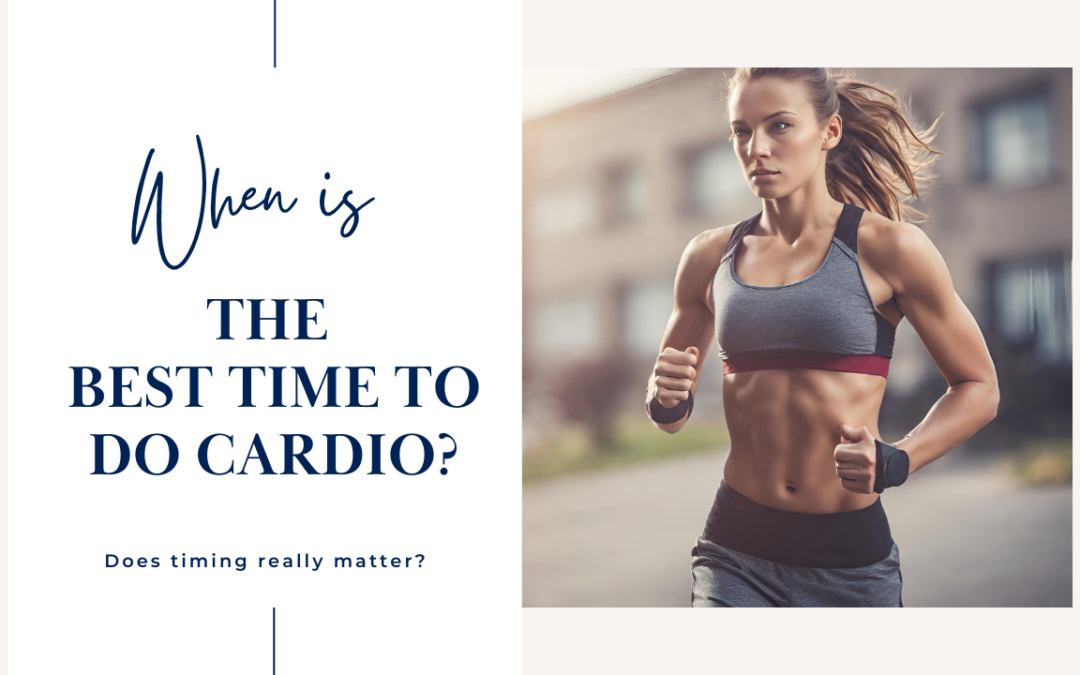
by EM2WL | Jan 16, 2024 | Cardio
When it comes to blending cardio with resistance training, when you do it matters. Let’s break it down into simple steps so you can understand how the timing of your cardio impacts your results.
Option 1: Cardio on Rest Days
Easy enough, right? Pick the days when you’re not lifting weights to do your cardio. This way, you keep things neat and tidy, letting your body focus on each type of exercise separately.
Option 2: Cardio on Lifting Days
Here’s the trick – if you can, spread out your cardio and lifting sessions. Studies say the more space you can put between them, the better your results. This works like a charm, especially if you lift three days a week and dedicate one (or more) of the other four to cardio.
Juggling Act: Frequency, Preferences, and Fun Days
As you lift more often, finding the right balance with cardio becomes a puzzle. It’s about figuring out how many cardio sessions fit your routine. And don’t forget personal preference – maybe you want some days off for leisure instead of sweating it out all the time. It’s your workout, so make it work for you.
Splitting on the Same Day: Smart Moves
If keeping cardio and lifting apart is a mission, no worries. Split them up on the same day. Try cardio in the morning and lifting in the evening (or the other way around). It’s especially handy for HIIT enthusiasts. Just remember, the order isn’t a big deal; what matters is giving your body a few hours of rest in between.
Snack Time: Fueling Your Performance
Feeling tired? A well-balanced diet can sort that out. But if you’re doing morning cardio before breakfast, grab some carbs right after to refuel your energy stores.
Rule for Same-Day Workouts: Lift First
If you’re stuck doing both cardio and lifting in one go, stick to a rule: Lift first. Aerobic exercises, even the easy ones, can tire you out. Start with lifting to keep your energy levels up. Studies show doing cardio before lifting might mess with your muscle growth signals, no matter if it’s HIIT or regular cardio.
In a nutshell, when you do cardio is like adding spices to a dish – it can make or break it. So, consider these options, think about what suits you best, and get ready to rock your workout routine. Whether you like to keep things separate, mix them up on the same day, or follow a rule for same-day workouts, the key is finding your sweet spot.
New to eating more for weight loss? Grab our free Quick Start Guide!
Eating more OG? Join the Workout Vault Community to take your results to the next level!
Did you enjoy today’s episode? Be sure to subscribe so that you don’t miss any new episodes! The Diet Rebel podcast is available on Audible, Spotify, Google Play, or Apple.
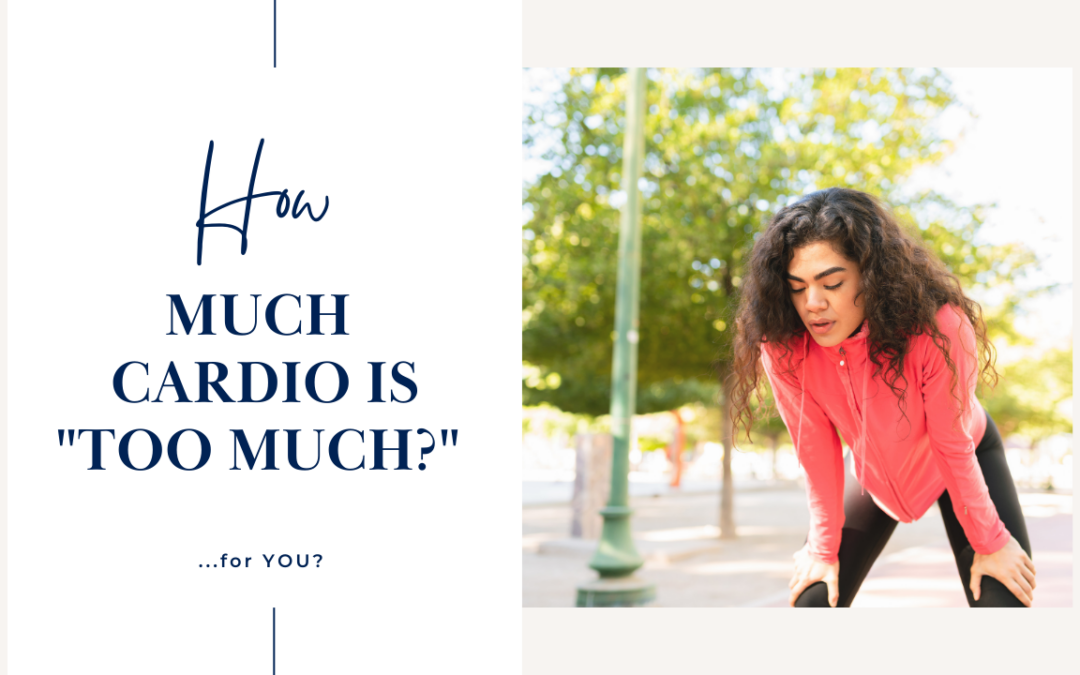
by EM2WL | May 26, 2023 | Cardio
HOW MUCH CARDIO IS TOO MUCH?
Contrary to my personal anti-treadmill stance, cardio can absolutely play a role in fat loss. But just like everything else in life, there is such a thing as too much of a good thing.
Although our motto here at EM2WL is “cardio for fun, weights to transform,” we DO recognize the value that cardio can add to a goal-specific workout plan (and that fact that some of you REALLY actually…umm…love it). So it’s understandable that cardio lovers in the Fam, striving to heal their metabolisms and finally lose fat tend to panic a bit when they hear anything about doing “too much” cardio!
When it comes to cardio, it seems that people either love it or hate it. Whether you’re a group instructor, runner, or despise cardio, your workouts should work for you, not against you. In order for this to happen, you must understand the purpose behind each type of workout, how it pertains to your goals, and apply it accordingly.
THE PURPOSE OF CARDIO
Cardio is endurance exercise. The more you do, the better your body adapts, and builds up the ability to be able to withstand the same circumstances next time.
This adaptation is great if the goal is to cover a certain distance in increasingly quicker amounts of time (think: training for a marathon), or simply last longer in Zumba class.
As far as general heart-health is concerned, this is usually the goal.
UNDERSTANDING ADAPTATION
Your new level of efficiency is usually noticeable during workouts when you’re suddenly able to do more cardio than you initially were physically capable of doing just weeks/months before. For example: you may have originally broken a sweat doing ten minutes of cardio before, but now you have to do fifteen minutes to get to the same level.
If you were formally breathless chasing the kids, or climbing a flight of stairs – this type of adaptation is an amazing/healthy feeling. However, when the goal is fat loss, this adaptation means you now have to do more work to achieve the same results you initially were achieving with your cardio-only workouts.
Adaptation = doing the same work for lesser results.
When it comes to adaptation, strength training is no exception. If you lift the same weight day in and out, your body eventually adapts and that weight just won’t cut it. You’ll have to introduce new stimuli to keep getting results, or risk hitting the infamous plateau.
But there’s good news when it comes to weight lifting adaptation: all you have to do to bust past that plateau is to lift heavier weights! The duration of your weight lifting sessions will never have to change (like your cardio has to) so long as you’re increasing your weights. This allows you to still be efficient without putting in extra time. Weight lifting gives you the most bang for your buck.
In other words: endurance exercise improves your endurance, but doesn’t necessarily contribute to fat loss beyond the initial newbie phase.
Lifting improves your strength, endurance, lean body mass (muscle!) and assists in fat loss.
MONITORING ADAPTATION
So how do you know that you’ve entered the “adaptation zone?”
In addition to monitoring your performance during the workout, you can turn to your heart rate monitor (HRM) for clues. Using a HRM – or other wearable fitness device that monitors HR (like Fitbit) will allow you to see when your body gets to a point where it becomes more efficient at cardio.
As endurance improves, your HRM will subsequently show that your calorie burn is lessening for common cardio activities. When you notice that you’re burning less cals boing the same amount of work, your body has adapted. At that point you must either increase time, or change up your workout style to continue getting results.
If, for instance, you’re training for a race or are focused on increasing endurance, remember increased efficiency is in fact a good thing. When that calorie adaptation occurs, you’ve just shortened your race time. Increasing the time of the workout is actually the goal in that case.
On the flip side, when it comes to fat loss, inefficiency is key.
WHAT IS “TOO MUCH” FOR YOU?
Doing the same workouts, but burning less cals, would mean that over time you’d be eating too much (even on a diet) – and eventually start GAINING weight.
That is what we’re trying to prevent when we provide warnings about “too much cardio” during your reset or early stages of fat loss. It’s not about removing something that you love, but rather understanding the roles that workout style plays in your fat loss journey.
There is no magic, universal number for how much cardio is too much. By using the tips above, your best answer is to listen to your body and evaluate often to see where your efficiency levels are at and if they’re conducive to the physique goals you’re trying to achieve.

by Keysia Linares Marzullo | Jul 8, 2022 | Cardio, Diet Mentality, Fat Loss / Cutting
This video explores the pros and cons of fasted cardio, which has been getting a lot of attention lately. I’ll give you my verdict on whether or not it’s actually worth doing. Is fasted cardio really the best way to burn fat?
Is Fasted Cardio Really the Best Way to Burn Fat?
Today, we are talking all about fasted cardio. One of the reasons why I wanted to bring this up is because I recently got a question about fasted cardio. And is it helpful, or is it hype?
So let’s talk about it. A lot of fitness gurus promote fasted cardio. In case you have never heard of fasted cardio before, it is when you do just that. You wake up first thing in the morning and do cardio before eating. Especially in the morning because now you’ve come off an eight to twelve-hour fast, depending on how long you slept. That’s a fasted cardio in its simplest form.
So, Why are people promoting fasted cardio? Typically, your blood sugar levels drop when you wake up in the morning and have gone an extended time without food. When your blood sugar is running low, your glycogen storage, where your body stores all of its carbs, starts emptying. Now, because the carb sources are lower, you’re creating this environment where your body will start looking for other things to use for fuel. The following preferred fuel option would be fat.
When you go to work out, your body burns through carb storage. If you workout with minimal carbs in your system, your body tends to burn it instead for fuel during that workout. This sounds good on paper but is it really? The answer may surprise you…

Links
Download Your FREE Quick Start Guide
Sign Up For The FREE Women’s Fat Loss Webinar
SUBSCRIBE To Our Youtube Channel
Download our Workout App
Schedule A Call With Me
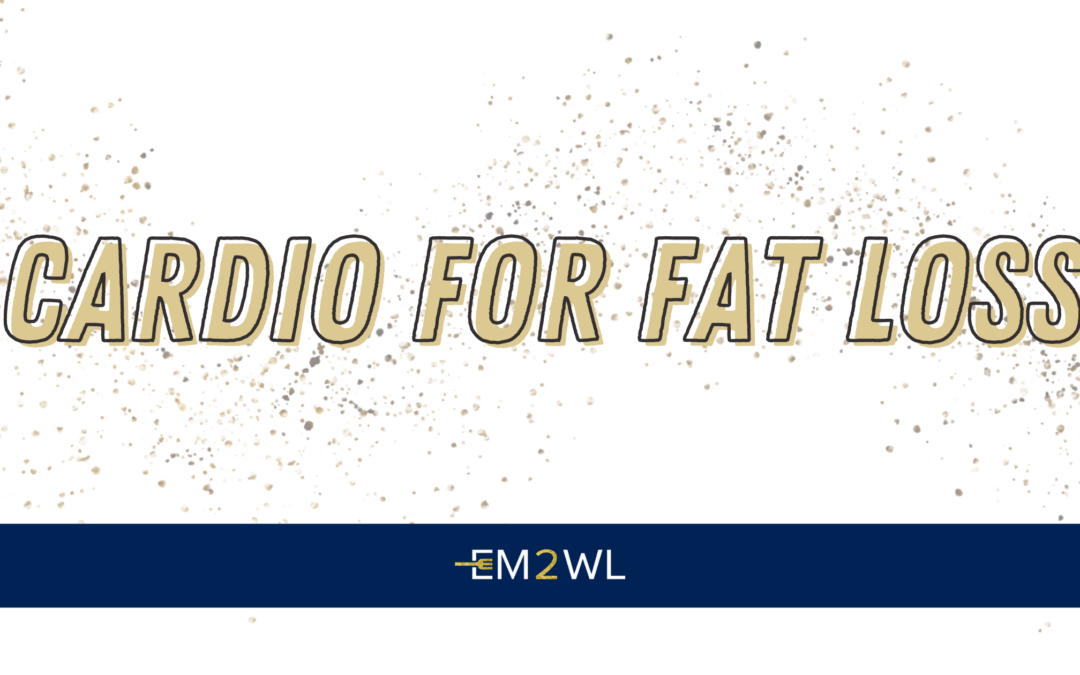
by Keysia Linares Marzullo | Jun 23, 2022 | Cardio, Diet Mentality, Fat Loss / Cutting
Are you frustrated with your weight? Are you doing hours of cardio each week and not seeing the results you want? You’re not alone. Many people believe that cardio is the key to fat loss, but that’s simply not true. In this blog post, I’m going to share the truth about cardio for fat loss and how to incorporate it in a way that works for you. Watch the video below to learn more!
The Truth About Cardio For Fat Loss
Today, we’re talking all about cardio. Anyone who knows me knows that I’m all about muscle equaling metabolism. Now, you may be asking, “Where does cardio fit into that?” In this week’s video, I share a class replay from my app membership where I dove into the most frequently asked questions about cardio. Questions, such as, How much can/should I do? What if I love cardio and don’t wanna give it up? How does cardio fit into my desire to rebuild lost muscle mass? Does it affect my metabolism?
If you’ve ever thought about these questions, I think today’s video will be super helpful for you. You will notice people on both ends of the spectrum; for example, some people are doing tons and tons of cardio. They think that’s what they have to do to get results, while others are sedentary, barely doing any movement outside of their two to three lifting workouts per week because they think they shouldn’t do any cardio.
The problem is that typically, neither one of those is getting results. The people doing way too much may also end up gaining weight overall, as the people doing too little might find that they’re gaining some weight from being super sedentary. Hopefully, you don’t fall under any of those extremes. Whether you love or hate cardio, or are just wondering how it works for you, stay tuned for today’s video because it will give you much insight into how to make cardio work for you and your goals.

Links
Download Your FREE Quick Start Guide
Sign Up For The FREE Women’s Fat Loss Webinar
SUBSCRIBE To Our Youtube Channel
Download our Workout App
Schedule A Call With Me





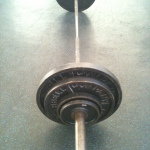


Recent Comments